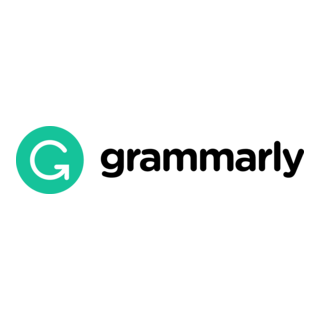Digital Literacy of Millennials Santri: A Case Study In Pondok Pesantren Tahfidzul Quran Al-Jihadul Chakim Mojokerto
 Abstract views: 272
,
Abstract views: 272
,
 PDF downloads: 288
PDF downloads: 288
Abstract
Pesantren or Islamic Boarding Schools is a type of classical educational institution that still exis nowadays. As time goes by, Pesantren always has formal educational institutions in the form of madrasah. Students who live in pesantren are identified as students who do not know the advancement of technology. Moreover, not being allowed to use cell phones in the pesantren area is being another trigger. The purpose of this study is to find the related approach of MTs Al-Jihadul Chakim in facilitating their students in digital literacy. This study uses qualitative methods, focusing on digital literacy. The results of this study found that MTs Al-Jihadul Chakim as a pesantren-based madrasah provides programs and facilities for its students to have digital literacy skills. The form of those approaches are programs such as ICT-based learning, assistance in managing social media wisely, coaching graphic design skills, and photos/videography program.
Downloads
References
Arby, Aulia Rahmanul, Husnul Hadi, and Ferina Agustini. “Keefektifan Budaya Literasi Terhadap Motivasi Belajar.” Mimbar PGSD Undiksha 7 (2019): 181–88.
Berger, Jonah, and Raghuram Iyengar. “Communication Channels and Word of Mouth: How the Medium Shapes the Message.” Journal of Consumer Research 40, no. 3 (2013): 567–79. doi:10.1086/671345.
Dewi, Suci Zakiah, and Irfan Hilman. “Penggunaan TIK Sebagai Sumber Dan Media Pembelajaran Inovatif Di Sekolah Dasar.” Indonesian Journal of Primary Education 2, no. 2 (2019): 48. doi:10.17509/ijpe.v2i2.15100.
Duthler, Kirk W. “The Politeness of Requests Made via Email and Voicemail: Support for the Hyperpersonal Model.” Journal of Computer-Mediated Communication 11, no. 2 (2006): 500–521. doi:10.1111/j.1083-6101.2006.00024.x.
Edwards, Lana. “Writing Instruction in Kindergarten Examining an Emerging Area of Research for Children with Writing and Reading Difficulties.” Journal of Learning Disabilities 36 (March 1, 2003): 136–48; discussion 149. doi:10.1177/002221940303600206.
Hamid, Abdulloh Pendidikan Karakter Berbasis Pesantren (Pelajar Dan Santri Dalam Era IT&Cyber Culture), (Surabaya: Imtiyaz, 2017), 166.
Helmiah, Fauriatun, and Andri Nata. “Membangun Skill Desain Grafis Dalam Mengahadapi Era 4 . 0” 3, no. 1 (2022): 129–33.
Hidayatullah, M Rizal, and Yanuar Yoga Prasetyawan. “Kajian Literasi Media Online Santri Mahasiswa (Studi Etnografi: Pondok Pesantren Mahasiswa Al-Fattah, Sumurboto Semarang).” Jurnal Ilmu Perpustakaan 8, no. 4 (2019): 194–203. https://ejournal3.undip.ac.id/index.php/jip/article/view/26871%0Ahttps://ejournal3.undip.ac.id/index.php/jip/article/download/26871/23711.
Kawangung, Yudhi. “Religious Moderation Discourse in Plurality of Social Harmony in Indonesia.” International Journal of Social Sciences and Humanities 3, no. 1 (2019): 160–70. doi:10.29332/ijssh.v3n1.277.
kementerian pendidikan dan kebudayaan. “Materi Pendukung Literasi Digital.” Kementerian Pendidikan Dan Kebudayaan, 2017, 43. http://gln.kemdikbud.go.id/glnsite/wp-content/uploads/2017/10/literasi-DIGITAL.pdf.
Menke, Mandy R., and Kate Paesani. “Analyzing Foreign Language Instructional Materials through the Lens of the Multiliteracies Framework.” Language, Culture and Curriculum 32, no. 1 (2019): 34–49. doi:10.1080/07908318.2018.1461898.
Mukaromah, Euis. “Pemanfaatan Teknologi Informasi Dan Komunikasi Dalam Meningkatkan Gairah Belajar Siswa.” Indonesian Journal of Education Management and Administration Review 4, no. 1 (2020): 179–85. http://www.yourdictionary.com/library/reference/word-definitions/definition-of-technology.html.
Mukhlisin, FIl Isnaeni, Nurjaya, Mukhoyyaroh, A. Ari Masyhuri. “Urgensi Literasi Digital Bagi Santri Milenial.” JurnAL Pengabdian Kepada Masyarakat-Aphelion 1, no. 2 (2021): 208–14.
Naufal, Haickal Attallah. “Literasi Digital.” Perspektif 1, no. 2 (2021): 195–202. doi:10.53947/perspekt.v1i2.32.
Prastyo, Angga Teguh. “Model Budaya Literasi Digital Pada Pondok Pesantren Berbasis Perguruan Tinggi Di Masa Covid-19.” LITERASI (Jurnal Ilmu Pendidikan) 13, no. 1 (2022): 13. doi:10.21927/literasi.2022.13(1).13-27.
Qutni, Darul, and Andy Moorad Oesman. “Urgensi Literasi Digital Bagi Generasi Milenial Dalam Konservasi Budaya.” LIBRARIA: Jurnal Perpustakaan 10, no. 2 (2022): 291. doi:10.21043/libraria.v10i2.17468.
Safitri, Ida, Sufyarma Marsidin, Ahmad Subandi, Universitas Negeri Padang, and Sumatera Barat. “Analisis Kebijakan Terkait Kebijakan Literasi Digital Di Sekolah Dasar” 2, no. 2 (2020): 176–80. doi:10.31004/edukatif.v2i2.123.
Sukamto, Parsumo Rahardjo, Budi Suyanto, Idhawati Hestiningsih, Slamet Handoko, Wahyu Sulistiyo, Liliek Triyono, Aisyatul Karima, Sirli Fahriah, and Amran Yobioktabera. “Peningkatan Literasi Digital Santri Pesantren Tahfizh Daarul Qur’an Takhassus Kota Semarang Provinsi Jawa Tengah Dalam Rangka Menghadapi Era Industri 4.0,” no. 1 (2021): 840–48.
Ulfah, Anisa. “Model Literasi Digital Dalam Upaya Mengurangi Kesenjangan Digital Untuk Santri Menuju Indonesia Emas 2045.” Humanis 14, no. 1 (2019): 1–7.
Walther, Joseph B. “Theories of CMC and Interpresonal Relations.” The Handbook of Interpersonal Communication 4 (2011): 443–79. http://scholar.google.com/scholar?hl=en&btnG=Search&q=intitle:Theories+of+Computer-+Mediated+Communication+and+Interpersonal+Relations#0.
Yusnawati, Yusnawati, Ahmad Wira, and Afriwardi Afriwardi. “Internalisasi Nilai-Nilai Moderasi Beragama Di Instagram.” Tatar Pasundan : Jurnal Diklat Keagamaan 15, no. 1 (2021): 01–09. doi:10.38075/tp.v15i1.178.
Copyright (c) 2024 TADRIS: Jurnal Pendidikan Islam

This work is licensed under a Creative Commons Attribution-NonCommercial 4.0 International License.
The journal operates an Open Access policy under a Creative Commons Non-Commercial 4.0 International license. Authors who publish with this journal agree to the following terms:
- Authors retain copyright and grant the journal right of first publication with the work simultaneously licensed under a
 Commons Attribution-NonCommercial 4.0 International License
Commons Attribution-NonCommercial 4.0 International Licensethat allows others to share — copy and redistribute the material in any medium or format, and adapt — remix, transform, and build upon the material.
- Authors are able to enter into separate, additional contractual arrangements for the non-exclusive distribution of the journal's published version of the work (e.g., post it to an institutional repository or publish it in a book), with an acknowledgement of its initial publication in this journal.
- Authors are permitted and encouraged to post their work online (e.g., in institutional repositories or on their website) prior to and during the submission process, as it can lead to productive exchanges, as well as earlier and greater citation of published work (see The Effect of Open Access).














